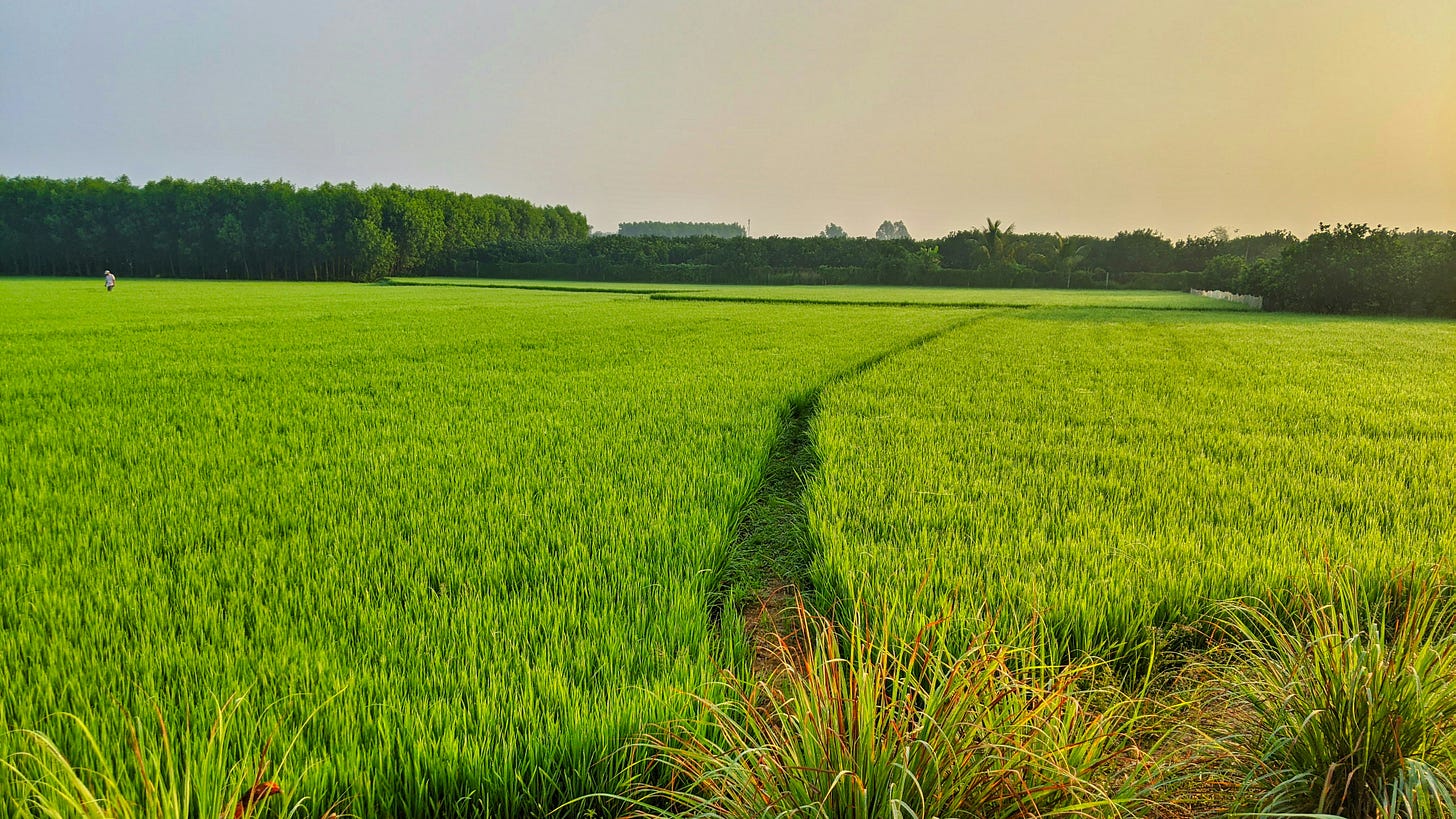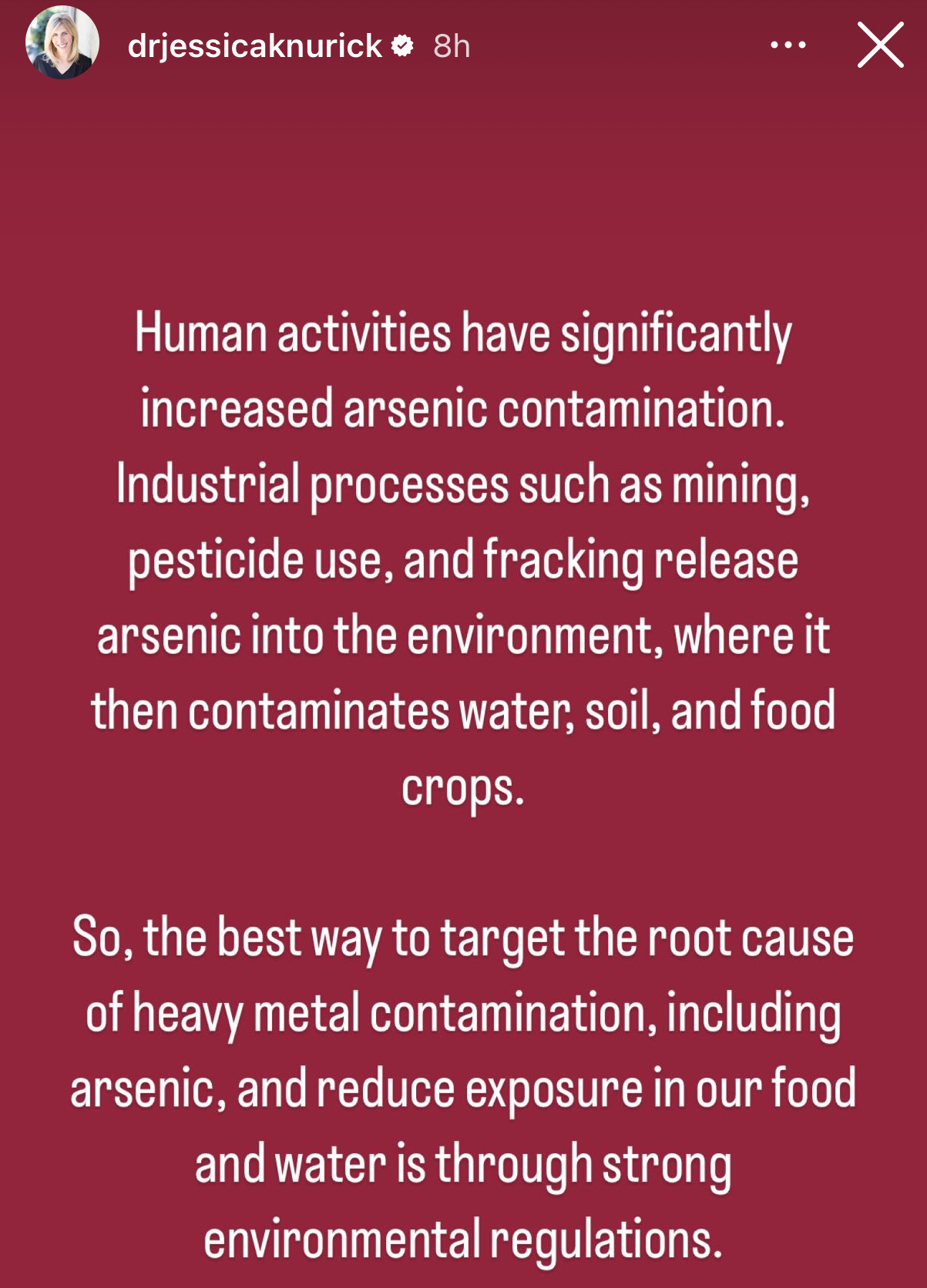Do You Need to Worry About Arsenic in Your Rice?
Rice is a popular gluten-free grain—but it's not without potential health concerns.
Rice is a staple in the gluten-free diet. This grain is naturally gluten-free, easy to cook, and pairs nicely with so many different foods. I often use rice as a base for weeknight meals like taco bowls and stir fries.
But a recent report published by the organization Healthy Babies, Healthy Futures found that rice contains potentially concerning levels of heavy metals such as arsenic, cadmium, and lead that could be dangerous to your health. (This isn’t a new issue and has been well-known for decades—it’s just getting buzz again now because of this report.)
Just how worried do you need to be about arsenic in rice? I spoke to nutrition and food experts to find out everything you need to know.
Table of contents:
What is arsenic?
Per the National Institute of Environmental Health Sciences, arsenic is a naturally occurring element throughout the Earth’s crust. It’s found in food, soil, water, and air.
“Arsenic is an element that is a metalloid, which means that it resembles both metals and nonmetals in its properties,” notes Mark Jensen, associate food consultant at Mendocino Food Consulting. “It is ubiquitous in the environment, but some areas of the world have higher levels in the water and soil.”
Environmental arsenic can be higher in some places due to mining, coal burning, the use of arsenic-containing pesticides in the past, and other older industrial processes that involved the element—all of which permanently add arsenic into the environment, adds Jensen.
Why is there arsenic in rice?
You might be asking yourself: Why the heck is there arsenic and other heavy metals in rice, anyway? The type of arsenic referred to in the recent report from Healthy Babies, Healthy Futures is inorganic arsenic, which is considered more harmful than organic arsenic, says Leah McGrath, RD, LDN, author of .
“Inorganic arsenic that is found in soil can be the result of environmental pollution, a byproduct of industry or older generation (no longer used) pesticides that are still in soil,” she explains. “Since rice in many areas is grown in fields that are deliberately flooded, the rice can take up arsenic and other heavy metals from the soil as it is growing.”
Amy Margulies, RD, founder of The Rebellious RD, says that rice absorbs more arsenic than other grains. This is something evident from the report, which finds that rice contains more arsenic than gluten-free grains like amaranth, quinoa, buckwheat, and millet.
Some types of rice also contain more arsenic than other types of rice. For starters, there’s more arsenic and pesticide contaminants in brown rice than there is in white rice, according to a 2023 study in Frontiers in Nutrition.
“Inorganic arsenic that is found in soil can be the result of environmental pollution, a byproduct of industry or older generation (no longer used) pesticides that are still in soil. Since rice in many areas is grown in fields that are deliberately flooded, the rice can take up arsenic and other heavy metals from the soil as it is growing.” - Leah McGrath, RD, LDN
The Healthy Babies, Healthy Futures report notes that white rice grown in the southeast US, brown rice, and arborio rice (risotto) from Italy had the highest levels of heavy metals, while California rice (Calrose, sushi, Jasmine, white), Jasmine rice from Thailand, and Basmati rice from India were lower in heavy metals.
Grains such as rice aren’t the only foods that contain arsenic. According to The Ohio State University (OSU), seafood, dairy products, poultry, and red meat all contain arsenic. However, they contain organic arsenic, which is less toxic, and they usually have less arsenic than rice does.
Is arsenic in rice dangerous?
First things first: Margulies highlights the fact that inorganic arsenic is classified as a carcinogen by the World Health Organization. According to the American Cancer Society (ACS), arsenic is linked to various forms of cancer in humans.
Beyond that, the ACS states that continued exposure to lower levels of arsenic over time can lead to liver and kidney damage, changes to the skin, and lower red and white blood cells, which can lead to fatigue and up your risk of infections. Consuming high levels of arsenic, meanwhile, can cause symptoms like vomiting, diarrhea, muscle weakness, cramping, and skin rashes, per the ACS.
So, how worried do you need to be about eating rice—and in particular brown rice? The experts I chatted with say that if you eat rice daily—along with other rice-containing foods like rice cakes, rice cereal, and rice milk—then this may be a concern for you. It really depends on the situation, though.
When assessing your individual risk, McGrath says you should consider the following factors beyond how much rice you eat:
What type of rice do you eat regularly? “Brown rice, higher in nutrients because it still contains the bran, can have higher arsenic amounts since the arsenic stays in the bran,” says McGrath.
What other foods and beverages made from rice do you eat regularly? This includes things like rice cakes, rice-based cereals, rice milk, rice crackers, and products that have rice syrup as an ingredient, says McGrath.
Are you an adult or a child? Are you pregnant? As Jensen points out, Healthy Babies, Healthy Futures’ focus is on infant health—and infants are more susceptible to every type of harm. According to new research out of Michigan State University, there are potential health concerns for infants and children under 5 eating brown rice since they consume more food relative to their body weight than adults. “Especially if you are in a higher risk category (pregnant person) or are making food for a child, consider other grains and having white rice instead of brown rice and overall eating rice or products with rice less often,” suggests McGrath.
On the flip side, if you’re a healthy adult who just eats rice occasionally, you may not have to be too worried. Recently, , did a deep dive into the Healthy Babies, Healthy Futures report on her Instagram account and noted that while Food and Drug Administration (FDA) doesn’t set maximum regulatory action limits for inorganic arsenic in rice, the European Food Safety Authority (EFSA) does.
She explained that the EFSA’s limits are 250 parts per billion (ppb) for brown rice and 150 ppb for white rice. Healthy Babies, Healthy Futures found that the brown rice they tested contained 129 ppb of arsenic and the white rice grown in the southeastern US contained 95 ppb of arsenic—which is lower than the EFSA’s standards, said Knurick on Instagram.
In her Instagram story, she went on to say that “while 129 ppb in brown rice and 95 ppb in white rice are not ideal, they are not considered ‘dangerously high’ by international regulatory standards. It’s actually quite common to see brown and white rice around those levels.”
When it comes to brown rice—which is often lauded for its health benefits but is higher in arsenic—the risks might outweigh the benefits if you eat it daily and/or are in a higher risk category, says Jensen. The good news? “You can get similar nutrients from other grains and food,” says McGrath.
For example, she says brown rice is a good source of B vitamins, but you can also get B vitamins from green leafy vegetables, meat, and dairy. Brown rice is also an excellent source of manganese, but so are nuts, says McGrath.
As for white rice, Jensen notes that it’s a major part of diets around the world—and it’s a particularly accessible food for low-income individuals. There may not be any realistic alternatives in these cases, “which means the effects of arsenic are not as harmful as those of malnutrition or unbalanced diets,” says Jensen.
How to reduce arsenic in rice
There are a few things you can do to lower the amount of arsenic you consume, according to the FDA. The experts I interviewed suggest the following:
Diversify your diet. “If you eat rice every single day—which is something you might do if you have celiac disease—it’s a good idea to diversify your grains,” says Margulies. This is especially important for pregnant people and kids (two higher risk categories), says McGrath. Luckily, there are many naturally gluten-free grains that are lower in arsenic. These include quinoa, buckwheat, and amaranth, says Margulies.
Choose your rice wisely. Some types of rice contain more arsenic than others. “In America, most rice is grown in Arkansas, Texas, Louisiana, and California—and generally, rice grown in the South has high levels of arsenic whereas California rice has lower amounts,” says Jensen. “Internationally, rice grown near the Himalayas (namely Basmati) and that grown in Southeast Asia (namely Jasmine) have the lowest amounts of arsenic worldwide—but also some of the highest prices.” Something that may not help in this case? “An important note is that buying organic rice may have no benefit in this situation in reducing arsenic amount,” says McGrath.
Rinse your rice before cooking. Rinsing raw rice before cooking can slightly decrease the amount of arsenic, says Margulies. According to OSU, it lowers arsenic by about 10%. Just note that rinsing before cooking and boiling in excess water like pasta (recommended below) do decrease the nutritional value of the rice, says McGrath.
Cook your rice like pasta. The only cooking method that can significantly reduce arsenic is boiling it in excess water and draining it, just like you’d do with pasta, says Jensen. OSU recommends boiling rice like pasta with six cups of water for every one cup of rice as this can remove anywhere from 40% to 60% additional arsenic. After boiling, drain the water and rinse the rice again.
Additionally, on Instagram, Knurick pointed out that while arsenic is a naturally occurring element in the earth, human activities have significantly increased the amount of arsenic in the environment. “So, the best way to target the root cause of heavy metal contamination, including arsenic, and reduce exposure in our food and water is through strong environmental regulations,” she posted.
Have you heard about the dangers of arsenic in rice? Have you or will you be changing up any of your dietary choices based on these findings? Drop a comment and let me know!
Sources:
Mark Jensen, associate food consultant at Mendocino Food Consulting
Leah McGrath, RD, LDN, author of Build Up Dietitians Newsletter
Amy Margulies, RD, founder of The Rebellious RD
Healthy Babies, Healthy Futures. Report: What’s in your family’s rice? https://hbbf.org/report/arsenic-in-rice
National Institute of Environmental Health Sciences. Arsenic. https://www.niehs.nih.gov/health/topics/agents/arsenic
Frontiers in Nutrition. 2023 Jul 14;10:1209574. “Arsenic in brown rice: do the benefits outweigh the risks?” https://pmc.ncbi.nlm.nih.gov/articles/PMC10375490/
Ohio State University. How to reduce arsenic in rice, and why it matters. https://health.osu.edu/wellness/exercise-and-nutrition/how-to-reduce-arsenic-in-rice
World Health Organization. Arsenic. https://www.who.int/news-room/fact-sheets/detail/arsenic
American Cancer Society. Arsenic and Cancer Risk. https://www.cancer.org/cancer/risk-prevention/chemicals/arsenic.html
Michigan State University. MSU research: Eating brown rice increases exposure to arsenic in young children. https://msutoday.msu.edu/news/2025/msu-research-eating-brown-rice-increases-exposure-to-arsenic-compared-to-white-rice
Jessica Knurick, PhD, RDN. https://www.instagram.com/drjessicaknurick/
Healthline. Is Brown Rice Good for You? https://www.healthline.com/nutrition/is-brown-rice-good-for-you
US Food & Drug Administration. Tips to limit exposure to arsenic. https://www.fda.gov/food/environmental-contaminants-food/what-you-can-do-limit-exposure-arsenic







Grateful for your deep dive into this topic, Christina!
I can see the next movie title for Hallmark's murder mystery series, it's going to be Death by Rice. They're always teaching people how to use poison which I thoroughly disagree with (let them look it up on their own they don't need to provide people with ideas). As soon as you know that poison was the method of murder, they play on the history of women using arsenic for the plotline.
I eat way too much rice. I admit it. Having this information from someone I trust is helpful for me to make some decisions going forward.